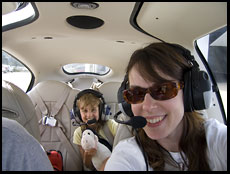
16.687: Private Pilot Ground School
Next class: January 20-22, 2026 (Room 56-114, 9am-5pm daily)

|
16.687: Private Pilot Ground SchoolNext class: January 20-22, 2026 (Room 56-114, 9am-5pm daily) |
Site Home : Teaching : One Course
Credit for registered MIT students: 3 units, pass/drop/fail (the class is free and open to non-MIT students)
Apply: sign-up form
Read in advance:
 Would you like to fly a plane, helicopter, or commercial drone? Or
understand the engineering behind today's human-occupied aircraft and
air traffic control system? Come spend 3 days with us and learn
everything that an FAA-certificated Private pilot or Remote Pilot
needs to know for the official knowledge test.
Would you like to fly a plane, helicopter, or commercial drone? Or
understand the engineering behind today's human-occupied aircraft and
air traffic control system? Come spend 3 days with us and learn
everything that an FAA-certificated Private pilot or Remote Pilot
needs to know for the official knowledge test.
The course includes qualitative aerodynamics, airplane and helicopter systems, practical meteorology, navigation and cross-country flight planning, and human factors. We present the FAA-required theory, pose some thought-experiments, and offer practical advice based on instructors' real-world experience.
Course staff: Tina Prabha Srivastava, pilot and MIT alum (Course 16 S.B.; System Design and Management S.M.; Engineering Systems Design Ph.D, supervised in Course 16, ESD, Sloan); Philip Greenspun, an FAA Airline Transport Pilot and Flight Instructor for both airplanes and helicopters, MIT alum (Course 18 S.B.; Course 6 Ph.D)
Prerequisites: A few evenings of reading (see above). Optional: Install Garmin Pilot (Android or iOS; need to create a Garmin account for weight and balance to function) or ForeFlight (iOS only) and set yourself up with a 30-day free trial. Bring a device to class, if convenient.
That said, given the technical sophistication of our audience and the fact that they are capable of reading, we tried to have them do some reading in advance and also didn't try to teach into every corner of the FAA material. The students who wanted to go on and earn a 98 or 100 score on the FAA knowledge test could hit the books after our lectures.
The FAA materials are designed to be comprehensible to a motivated 17-year-old. Given our audience we decided to teach some of the Why? and How? as well as the What?.
One critical departure from the standard approach was made in light of sociology research that the iPhone generation ("iGen") is more risk-averse than previous generations of Americans. Any slide that said "You will crash and die if you do X" was rewritten to say "You will stay safe if you do not-X." More substantively, we use the class an an opportunity to introduce the crew concept in flying. The FAA materials stress single-pilot operations, which is odd considering that (a) a two-pilot crew running checklists is the cornerstone of commercial aviation safety, and (b) most of the FAA is devoted to preventing single-pilot operations (e.g., by airlines).
Our goal was to show students that they could learn something challenging, develop a skill that they could be proud of, and do some fun trips, all while staying closer to airline levels of risk than single-pilot-in-little-plane levels of risk. We took every opportunity to tell them that here is the kind of flying where it can be helpful to bring along another pilot and/or instructor.
Finally, we stressed that they didn't have to earn an FAA Private certificate in order to say that they had achieved the ancient dream of controlled human flight. The FAA certificate was about being a safe single-pilot operator, something that passengers don't even want. Learning to fly per se, we explained, is more like a 10-hour process and therefore much more affordable.
Meteorology. A lot of problems in general aviation start with the weather. Meteorology is a standard academic topic. Why not cover it from an aviation angle, with the same kinds of homework that a meteorology student would do?
Aircraft Certification. FAR 23, 25, 27, and 29 constitute a rich area for engineers to look at. Homework: "Here is a system. How do you make it comply with FAR 23? What else would you have to do to make it comply with FAR 25?"
Software Engineering to FAA Certification Standards. Panel-mount avionics software is extremely reliable compared to what is on a desktop computer or a phone, but it is also extremely slow to evolve. Look at this alternative approach to software engineering and the pluses (the Garmin GPS will never crash) and minuses (the Garmin GPS will catch up to ForeFlight's 2020 features in 2050?).
Airport Design. Much of the safety of air transportation is actually due to forgiving airport design. Why are the K-prefixed airports that meet ICAO standards safer than the little strips that don't? (KBED v. 6B6) Problem set: here's an airport layout with some nearby obstacles with heights, what would you have to change to make it meet ICAO airport certification standards?